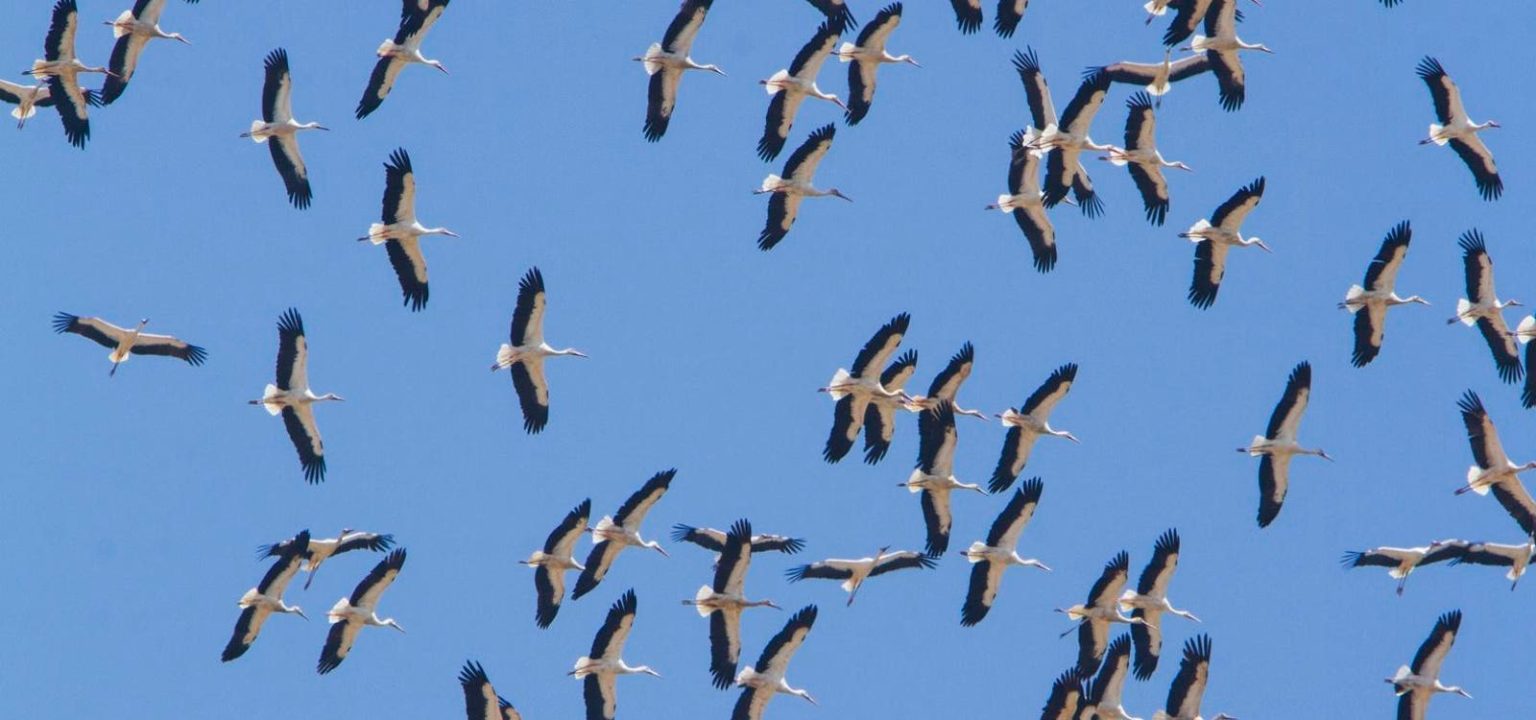A recent study published in Current Biology has shed light on how age influences the migration tactics of white storks. The research, conducted by scientists at the Max Planck Institute of Animal Behavior, studied 158 storks over multiple migration seasons to understand how they navigate their long journeys from Europe to Africa. The findings reveal that older storks exhibit more individualistic tendencies, choosing routes based on optimal flying conditions rather than the presence of other storks.
The study found that younger storks are more influenced by the density of their peers when selecting migration routes. This suggests that younger birds may rely more on social information to guide their journey, while older storks prioritize flying conditions that allow for energy-efficient soaring flight. Additionally, the research showed that older storks are less selective in their route choices, potentially due to a more evenly distributed density of conspecifics along their routes.
One interesting discovery from the study was that experienced storks may adjust their migration timing to avoid peak periods when social information and predictable uplift conditions are most prevalent. This behavior indicates that older storks strategically choose migration conditions based on their accumulated experience, rather than immediately available cues. The research also highlighted the importance of spatial memories and personal experiences in shaping the migration decisions of storks as they age.
In addition to age-related influences, the study found that migration decisions are influenced by various factors such as the need to find suitable stopover sites for resting and foraging, as well as avoiding predators and adverse weather conditions. The researchers noted that the integration of past learning and current environmental assessment plays a crucial role in the migratory strategy of white storks. Overall, the study provides valuable insights into the complex behaviors and decision-making processes involved in avian migrations.
The collective behavior of migratory birds, similar to schools of fish, serves as a strategic survival tactic rather than a random occurrence. By flying in formations, birds can conserve energy, navigate more effectively, and protect themselves from predators. This behavior also enhances their ability to locate essential resources like food and resting spots along their arduous migration routes, which can span thousands of miles.
One example of this collective behavior is the migration of white storks from Europe to Africa, where they face challenging terrains like the Sahara Desert and the Mediterranean Sea. The collective intelligence and shared experience within the flock help the storks navigate these vast landscapes with precision. A new study on stork migration revealed that age plays a significant role in determining the reliance on social information during migration. Younger storks tend to follow popular routes frequented by their peers, while older storks demonstrate more individualistic tendencies in selecting migration routes.













